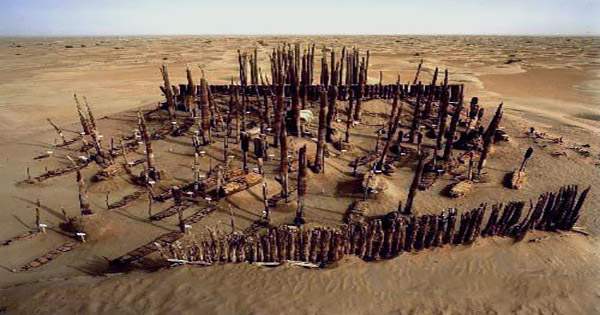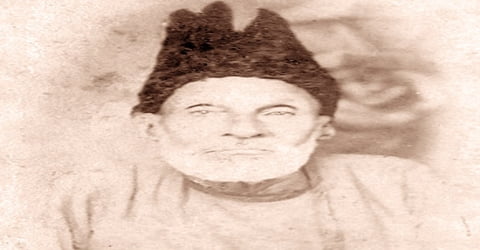Hundreds of human remains have been discovered just off the Silk Road in China’s Xinjiang Uyghur Autonomous Region’s deserts. The Tarim Basin mummies have now been genetically analyzed, with scientists uncovering a startling origin, which may help to explain how this community acquired their strange traditions and looks, which have perplexed experts for years.
The mummies, which date from 2,000 BCE to 200 CE, have piqued people’s interest since they do not seem like the other ancient residents of the area. They were buried alongside other signs of a farming culture that included cattle, sheep, and goats, wheat, barley, millet, and cheese, and they had comparatively “Western” features, wore colorful woolen clothing, and were buried alongside other signs of a farming culture that included cattle, sheep, and goats, wheat, barley, millet, and cheese. The Tarim Basin mummies buried in a bleak desert in boat-shaped coffins wrapped in cow skins, which is perhaps the oddest aspect of all.
Researchers utilized DNA analysis to examine thirteen of the earliest known Tarim Basin mummies, which date from around 2,100 to 1,700 BCE, according to a recent study published in the journal Nature. This indicated that they were direct descendants of the Ancient North Eurasians (ANE), a nomadic people that lived in the north Eurasian steppe and Siberia. Although this once-common group vanished some 10,000 years ago, its genetic legacy may still detect in Indigenous communities in Siberia and the Americas today.
While not all of the Tarim Basin mummies’ distinctive cultural artifacts appear to be naturally suited to their surroundings – boat burials and wool not normally linked with deserts — the latest research reveals that this population was not new to the area and had an overwhelmingly indigenous lineage. This contradicts prior views, which suggested herders from southern Russia’s Black Sea area, Central Asians, or early cultivators on the Iranian Plateau.
“Despite being genetically isolated, the Bronze Age peoples of the Tarim Basin were remarkably culturally cosmopolitan – they built their cuisine around wheat and dairy from West Asia, millet from East Asia, and medicinal plants like Ephedra from Central Asia,” says Christina Warinner, a senior author of the study and a professor of Anthropology at Harvard University. They also do not appear to have mixed much with other adjacent groups, instead of producing a previously unknown genetic isolation that presumably endured a severe genetic bottleneck before arriving in the area. This is remarkable given the widespread intermingling of other groups in the Tarim Basin at the time.
To learn more about these mysterious people, the researchers examined the DNA of five human remains found in the nearby Dzungarian Basin, which dates from 3,000 to 2,800 BCE. This revealed a completely different story: Dzungarian mummies derived from both local people and Western steppe nomads with substantial genetic ties to the Yamanya of the Early Bronze Age. Overall, the findings show how this improbable location played a unique role in Eurasia’s Bronze Age societies, serving as a critical crossroads for East, West, North, and South.
“Reconstructing the origins of the Tarim Basin mummies has had a transformative effect on our understanding of the region,” says Yinquiu Cui, a senior author of the study and professor in the School of Life Sciences at Jilin University in China. “We will continue the study of ancient human genomes in other eras to gain a deeper understanding of the human migration history in the Eurasian steppes.”
















